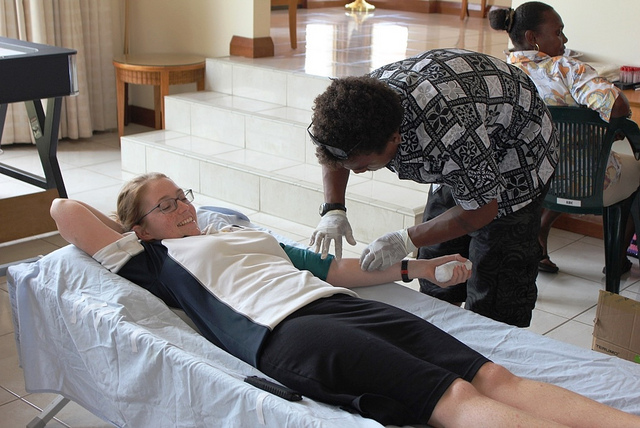Consider Donating Blood

During a crisis, people flock to blood donation centers to do what they can for those in need. While this is crucial and noble, we must remember that blood is always needed – not only when a catastrophic event occurs.
Did you know …?
- Someone in the U.S. needs blood every two seconds, which means that more than 41,000 blood donations are needed every day.
- 30 million blood components are transfused every year in the U.S.
- During an emergency, blood that’s already in storage is used.
- Of the more than 1.6 million people diagnosed with cancer last year, many will need blood, sometimes daily, during chemotherapy.
- A single car accident victim could require up to 100 pints of blood. A typical donor gives three pints per donation.
- All patients can receive Type O-negative red blood cells, which are in great demand but short supply. In an emergency, Type O-negative blood is used first when the patient’s blood type is unknown. It is also used for newborns who need an immediate blood transfusion.
- Type AB-positive plasma can be transfused to patients with all other blood types and is also usually in short supply.
- Blood cannot be manufactured; the only way to provide blood transfusions is from donated blood.
- The Red Cross estimates that 38 percent of people in the U.S. are eligible to donate blood, but fewer than 10 percent actually do.
Giving blood is easy and safe
While most people know the benefits of giving blood, they may be afraid of needles or nervous that they could contract a disease. Donating blood is a safe process that requires each donor to have his or her own sterile needle that is then discarded.
To be eligible to donate blood, you must be in general good health and feeling well, be at least 17 years old (16 year olds may donate in some states with parent consent), and weigh at least 110 pounds.
Before you arrive to give blood, you should have a light meal and plenty to drink. Also, bring the names of any medications you’re taking.
Here’s a rundown of what to expect when you donate blood:
Registration and medical history. Any information that you provide to the Red Cross is confidential. It will not be released without your permission except as directed by law. When you arrive, staff will review basic eligibility and donation information. You will need to show a donor card, driver’s license, or other form of ID.
Mini-physical. When you arrive to donate, technicians will check your pulse, blood pressure, body temperature, and hemoglobin (the molecule in your red blood cells that carries oxygen). You will be asked some questions about your health history and any international travel.
Donation. The process takes eight to 10 minutes for most donors. However, if you are donating platelets, red cells, or plasma, it may take longer. Red Cross staff and volunteers will be available to answer your questions or assist if necessary.
Refreshments! After you donate, make sure you have a snack and something to drink. A refreshment area that offers items like juice and cookies will be available at the donation site. You can leave after 10-15 minutes and resume your normal activities.
That’s it! Visit the American Red Cross website any time to find a blood drive near you. Don’t wait – someone is always in need!
 The Daily Dose
The Daily Dose
Comments are closed.